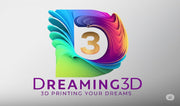For decades, the image of a science lab has been synonymous with rows of gleaming glassware, precise pipettes, and carefully cataloged reagents. These essential lab supplies have been the backbone of scientific discovery, unwavering in their design and function. But what if we told you that a quiet revolution is brewing in the world of laboratory equipment, one that promises to custom-fit, innovate, and democratize access to essential tools? Enter the fascinating intersection of lab supplies and 3D printing.
Imagine needing a very specific, oddly shaped holder for a new experimental setup. In the past, this might involve a lengthy search through catalogs, a costly custom fabrication order, or a less-than-ideal workaround. Today, with the power of 3D printing, that custom holder could be designed and printed in a matter of hours, right there in your lab.
The Dawn of On-Demand Labware
3D printing, or additive manufacturing, allows us to create three-dimensional objects layer by layer from a digital design. This technology, once largely confined to rapid prototyping in engineering, is now making significant inroads into scientific research, fundamentally changing how labs acquire and utilize their supplies.
Here's how 3D printing is shaking up the lab supply landscape:
-
Customization is King: No more one-size-fits-all. Researchers can design and print bespoke components tailored to their exact experimental needs. Think custom microscope stages, unique reaction vessels, specialized cell culture inserts, or even ergonomic pipette stands. This level of customization can optimize experimental conditions, improve reproducibility, and ultimately accelerate research.
-
Cost-Effectiveness and Accessibility: High-quality, specialized lab equipment can be incredibly expensive, often posing a significant barrier for smaller labs, educational institutions, or researchers in resource-limited settings. 3D printing offers a significantly more affordable alternative. Many common lab items, from stirring bars to centrifuge tube racks, can be printed for a fraction of the cost of commercially available versions. This democratization of lab supplies levels the playing field, allowing more researchers to pursue their scientific questions.
-
Rapid Prototyping and Iteration: Scientific discovery is often an iterative process. An initial experimental setup might reveal the need for a slight modification to a component. With traditional manufacturing, this could mean weeks of waiting for a new part. With 3D printing, a revised design can be printed overnight, allowing researchers to quickly test and refine their setups, saving invaluable time and resources.
-
Creating Complex Geometries: Some scientific applications require intricate designs that are difficult or impossible to manufacture using conventional methods. 3D printing excels at creating complex internal structures, microfluidic channels, and integrated components, opening up new possibilities for advanced research.
-
Sustainable Lab Practices: The ability to print only what is needed, when it is needed, can contribute to more sustainable lab practices. Reduced waste from over-ordering and the potential to recycle certain printing materials align with a growing global push for eco-conscious research.
What Can You Print? A Glimpse into the Future:
The possibilities are vast and continually expanding. Here are just a few examples of lab supplies currently being 3D printed:
-
Microfluidic devices: These tiny "labs-on-a-chip" are crucial for drug discovery and diagnostics.
-
Cell culture scaffolds: Creating ideal environments for cell growth and tissue engineering.
-
Custom lab tools: From unique clamps and holders to specialized chromatography columns.
-
Educational models: Allowing students to visualize complex biological structures or chemical processes.
-
Replacement parts: Extending the life of existing equipment by printing a broken knob or connector.
The Challenges and the Road Ahead:
While the benefits are clear, 3D printing in the lab isn't without its challenges. Material compatibility (ensuring printed parts are chemically resistant and non-reactive), sterilization protocols, and regulatory hurdles for certain applications are all areas of ongoing development. However, as 3D printing technology continues to advance, with new materials and higher resolutions becoming available, these challenges are steadily being addressed.
The convergence of lab supplies and 3D printing represents a paradigm shift. It empowers scientists with unprecedented control over their tools, fosters innovation through rapid prototyping, and makes cutting-edge research more accessible. So, the next time you're in the lab, take a moment to consider that the future of your essential supplies might just be coming to life, layer by intricate layer, on a 3D printer near you.
